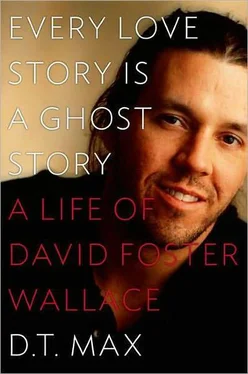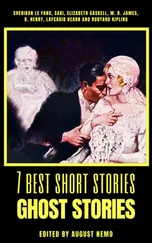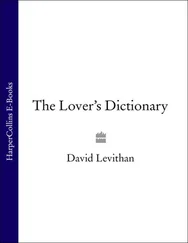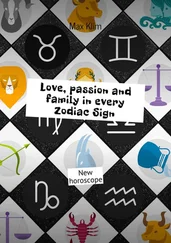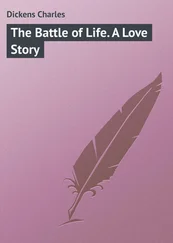I…tried my best to tell the truth and to be kind to reporters who hadn’t read the book and wanted only to discuss the “hype” around the book and seemed willfully to ignore the fact that articles about the hype were themselves the hype (for about a week there it seemed to me that the book became the Most Photographed Barn, everyone tremendously excited over the tremendous excitement surrounding a book that takes over a month of hard labor to read).
When JT, his buddy from Tucson, wrote to congratulate him, he wrote back, “WAY MORE FUSS ABOUT THIS BOOK THAN I’D ANTICIPATED. ABOUT 26 % OF FUSS IS WELCOME. AS YOU SAID YEARS AGO, ‘YUPPIES READ.’”
CHAPTER 7. “Roars and Hisses”
As soon as Wallace got home, he pulled the tour schedule off his wall and threw it away. Being back was a relief. He felt again the “weird warm full excitement of coming home,” the pleasure, as he had written Alice Turner just before his book tour, of a world where his neighbors were “lumber salesm[e]n and Xerox copier repairmen,” and hoped he would never have to go anywhere again. “The Icky Brothers”—Jeeves and The Drone — were waiting. He wrote poetically to DeLillo about the “horses in the yard of the doctor’s manse next door,” of spring in Bloomington, and apologetically to Corey Washington. He left a two-word message with Costello’s secretary: “I’m sorry.”
He was glad again to attend his regular meeting and reinsert himself in the world of recovery, with its emphasis on community and cooperation. The lessons of recovery were never far from his thoughts. When David Markson wrote in June to complain about an author’s getting an award he thought should have been his, Wallace gently warned him away from the pitfall of envy: “Mostly I try to remember how lucky I am to be able to write, and doubly, triply lucky I am that anyone else is willing to read it, to say nothing of publishing it. I’m no pollyanna — this keeping-the-spirits-up shit is hard work, and I don’t often do it well. But I try…. Life is good.”
Little, Brown wanted to publish a volume of Wallace’s magazine pieces right away. The idea was to get the book out before the red eye of Sauron moved on. Even before the last “spasms-trips” of Wallace’s tour, as Wallace called them, Pietsch was asking for the manuscript. Wallace, trying to show his gratitude, promised to work fast on “the lump.” For him it also represented an opportunity. He had never liked magazine editing, though he accepted it. Now he had, as he would later explain to DeLillo, a chance to undo the cuts editors had imposed on him to “make extra room for Volvo ads.” He added back in what had been taken out, sometimes doubling the published length of the pieces, reestablishing their verbal exuberance and their scope. 1He tinkered until the last minute, offering again to pay for corrections and reminding Pietsch that he still owed him for the ones at the last minute for Infinite Jest , but Pietsch pointed out that Infinite Jest was certain to generate royalties beyond its advance and the cost of the changes could come from those funds. Wallace responded that there would be more corrections forthcoming for the paperback.
A Supposedly Fun Thing I’ll Never Do Again came out in February 1997. Wallace told DeLillo he liked only the first and last essays in the book—“Tennis, Trigonometry, Tornadoes,” to which he gave back his original title with its mathematical overtone, “Derivative Sport in Tornado Alley,” and the cruise ship piece. Yet the response to the publication of what were to Wallace a group of older, maybe not so interesting anymore essays, was surprising. Infinite Jest had left in equal amounts goodwill and frustration. How many readers had gotten to page 70 and given up? But they all the same wanted more of Wallace. If nothing else, the title he gave the collection — it was the original title of the cruise ship piece restored — captured well his generation’s ambivalence toward pleasure and marketing and the marketing of pleasure. There was something stunning about the experiential aspect of the essays in the book too, the ones whose technique Wallace described in an interview as “basically an enormous eyeball floating around something, reporting what it sees.” Their very length spoke of commitment, discomfort, the importance of caring in a world urging you constantly to lighten up. It was like listening to your best friend in grad school, tirelessly willing to absorb, reason, confront, embrace but never accept.
In general, critics felt less ambivalent toward Wallace’s nonfiction than they did toward his fiction. The San Francisco Chronicle saw “a passionate and deeply serious writer” amid the hijinks, and James Wood in Newsday noted a fruitful divide between Wallace the postmodern essayist and the journalist “eager to notate reality (though in funky ways),” concluding, “His contradictions are his strength, and if one wants to see the zeitgeist auto-grappling, in all its necessary confusions, one must read every essay in this book.” For Laura Miller of Salon.com, the articles were confirmation of the promise hinted at by Infinite Jest . Writing in the New York Times Book Review she noted that A Supposedly Fun Thing “reveals Mr. Wallace in ways that his fiction has of yet managed to dodge: as a writer struggling mightily to understand and capture his times, as a critic who cares deeply about ‘serious’ art, and as a mensch.”
Wallace did not want to go on tour for the paperback of Infinite Jest , but since it came out the same month as A Supposedly Fun Thing , he could do so without appearing to. He went to ten cities as the new book appeared on many bestseller lists and sold roughly fifteen thousand copies in hardcover. One night Wallace read at the Brattle Theatre in Cambridge, Massachusetts, and then went to the Harvard Lampoon castle to receive an “Author of the Millennium” award, which he accepted only after making sure it was made up. There were long lines everywhere he went. At the end of the Infinite Jest book tour, despite misgivings, he had gone on Charlie Rose’s talk show. The spur was not his novel but a recent essay by Franzen on the state of fiction. The two had faced off with Mark Leyner and the experience had been relatively painless. So Wallace now said he’d appear on the show again for his essays. This time, without foils, the encounter was uncomfortable, as Wallace rocked back and forth in his white bandana, battling the urge to spew out the churning contents of his mind — to be on TV talking about the power of TV left him particularly confused: it was the kind of recursion he could not ignore. Friendly but insistent, Rose asked him about his pre-recovery days:
DFW:…Here’s why I’m embarrassed talking about it, not because—
ROSE:I want to know why.
DFW:Not because I’m personally ashamed of it, because everybody talks about it. I mean, it sounds like—
ROSE:In other words, everybody—
DFW:It sounds—
ROSE:Everybody talks about it for themselves or everybody talks about you?
DFW:No, everybody talks — it sounds like some kind of Hollywood thing to do. “Oh, he’s out of rehab and—”
ROSE:No, I—
DFW:“—back in action.”
ROSE:—didn’t say anything about rehab.
After a second successful book, Wallace again wanted to be sure that nothing fundamental had changed. Francis B. asked him to go with his wife’s preteen daughter to a movie and Wallace took her to Titanic and told her to cover her eyes during the nude scene. As ever, he admired those who lived as he could not: one member of his group worked twelve-hour shifts in a tire factory without air-conditioning, his only comfort the Serenity Prayer. “I mean,” he wrote a friend, “can you see why I LOVE some of these people?” At school he wore his bandana, devoted time in his classes to Grammar Rock, his mini-lessons on usage, and spat tobacco delicately into a red plastic cup. He edited students’ stories three different times, encouraging the timid and rebuffing the febrile. He made vocabulary word lists: “Birl, cause to spin rapidly with feet.” “Musth, period of heightened sexual drive in elephants (Vulcans) when they’re more aggressive.” He wanted to disappear again into the obscurity of being a difficult writer in a regional midwestern city.
Читать дальше
